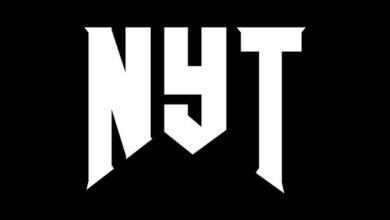“That’s Mind Blowing” – NYT: The Power of a Single Phrase in Modern Conversations

In the world of modern journalism, it’s not just the content that grabs attention, but also the tone, the way stories are framed, and the choice of language. The New York Times (NYT) has long been a leader in setting the standard for quality news reporting. Yet, even in this highly serious and reputable platform, it’s often the occasional phrases and expressions that break through and leave a lasting impression. One such phrase that has captured the attention of readers is “that’s mind blowing.” In this article, we’ll explore the impact of this phrase, how it’s used in journalism, and its role in shaping our reactions to the news.You know about thats mind blowing nyt also openrendz.
The Power of “That’s Mind Blowing”
“That’s mind blowing” is an expression that encapsulates a sense of astonishment, disbelief, or admiration. The phrase is often used when something exceeds expectations or defies understanding. It’s a way to convey how overwhelming or impressive a piece of information, fact, or event can be. For instance, reading about a groundbreaking scientific discovery, a shocking political development, or an extraordinary feat of human achievement might elicit such a reaction.
In the context of the New York Times, a phrase like “that’s mind blowing” can be used to describe a wide range of subjects. From the latest advancements in artificial intelligence to unexpected twists in global politics, this phrase helps convey the emotional weight of a particular piece of news. It’s a casual yet effective way to capture the awe and wonder that readers might feel when confronted with something truly extraordinary.You know about thats mind blowing nyt also openrendz.
How “That’s Mind Blowing” Transforms Reporting
The New York Times, known for its reputation of delivering in-depth analysis and clear, fact-based reporting, has also adapted its writing style to be more relatable and engaging for modern audiences. In this fast-paced world where the average person has limited time to consume news, finding ways to connect emotionally with the reader has become crucial. The phrase “that’s mind blowing” has found its place as a tool to break through the noise, making readers stop and reflect on the magnitude of the news they’re reading.
When used strategically, the phrase helps make abstract or complex issues more digestible and engaging. Consider a headline or article that begins with, “That’s mind blowing—scientists discover how to reverse aging in human cells.” This type of phrasing immediately piques curiosity and sparks conversation. By using a phrase like “mind blowing,” the writer frames the subject as something monumental, compelling readers to dive deeper into the story to understand why it’s so revolutionary.You know about thats mind blowing nyt also openrendz.
Moreover, “that’s mind blowing” adds a human touch to an otherwise formal and often dry journalistic style. It creates a sense of relatability, as readers are more likely to connect with an emotional response rather than a purely factual one. This technique builds rapport with the audience, making it feel less like a lecture and more like a conversation between the reporter and the reader.You know about thats mind blowing nyt also openrendz.
The Role of “That’s Mind Blowing” in Digital News Consumption
In today’s digital age, people consume news in various ways—through social media, podcasts, videos, and traditional print. The rise of digital media has forced traditional outlets like the New York Times to adjust their style in order to maintain relevance. Phrases like “that’s mind blowing” are particularly effective in the digital space because they are concise, attention-grabbing, and easily shareable.
For instance, when someone encounters a compelling news story on social media that includes a phrase like “that’s mind blowing,” they are more likely to click the link, share the post, or comment on it. The phrase encapsulates the excitement and significance of the news in a single, digestible line. It provides a shorthand for what the article is about, inviting engagement without overwhelming the audience with technical details or jargon.
The Evolution of Language in News Media
The rise of phrases like “that’s mind blowing” is part of a broader trend in journalism toward conversational language and emotional engagement. As the media landscape continues to evolve, news outlets are adopting new methods of writing that resonate with a younger, more dynamic audience. Phrases that might once have been reserved for casual conversations or pop culture references are now becoming commonplace in professional journalism.
While some might argue that this shift dilutes the seriousness of news reporting, others believe it is essential for connecting with a broader audience. The key is balance: maintaining journalistic integrity while adapting the style to modern expectations. “That’s mind blowing” is just one example of how language is evolving to keep pace with the changing ways in which people consume and engage with news.
Conclusion
In conclusion, “that’s mind blowing” is more than just a casual expression—it’s a tool that modern journalists use to enhance storytelling, engage readers, and make complex or astounding news more relatable. By incorporating phrases like this into their reporting, the New York Times and other news outlets continue to adapt to the demands of a rapidly changing media landscape. As the way we consume news evolves, expressions like “that’s mind blowing” will likely continue to play a significant role in how we connect with the stories that shape our world.



